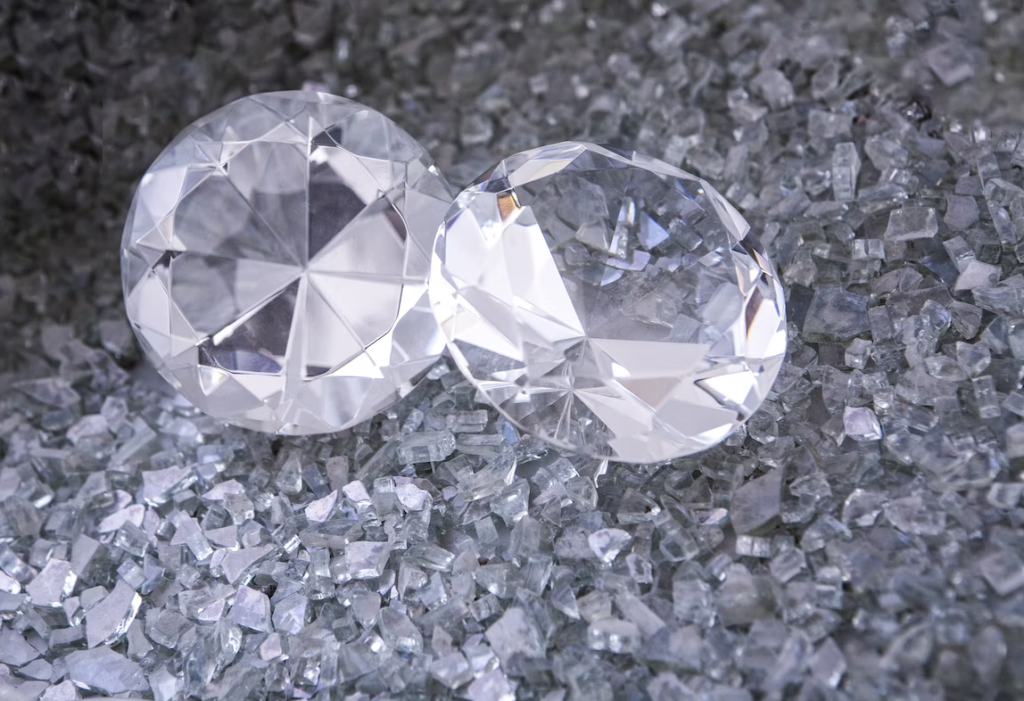If you take good care of your garden, your flowers, fruits, and vegetables will last longer and taste better. Almost all plant life requires at least some exposure to direct sunlight, though individual species have varying care needs.
It is important to learn the proper care for your garden if you want your outdoor food sources and beautiful flowers to last throughout the seasons.

What Do I Need To Maintain A Garden?
Maintaining a garden requires some essential tools and practices. Here are some things you may need:
1. Gardening Gloves:
Gardening gloves are an essential tool for maintaining a garden. They protect your hands from thorns, prickly plants, blisters, and exposure to chemicals in fertilizers or pesticides.
They also provide a better grip when handling gardening tools and prevent soil from getting under your nails.
When selecting gardening gloves, consider the type of gardening work you will be doing. Heavy-duty gloves are suitable for tasks that require more protection, like pruning thorny plants or handling heavy equipment, while lighter gloves are better for planting and weeding.
Additionally, choose gloves that fit your hand size and are made from materials that provide comfort and flexibility, such as leather or breathable fabrics. Overall, gardening gloves are a must-have for any gardener who wants to keep their hands protected and healthy.
2. Hand Trowel And Spade:
A hand trowel and spade are two of the most important tools for maintaining a garden. They are used for digging, planting, and moving soil.
A hand trowel is a small, handheld tool with a pointed end and a curved blade that is used for digging small holes, breaking up soil, and planting small plants or seeds. It is especially useful for working in tight spaces or raised garden beds.
On the other hand, a spade is a larger tool with a flat, rectangular blade and a long handle. It is used for digging deeper holes, edging garden beds, and cutting through roots. It is more suitable for heavy-duty tasks, like digging trenches or removing large plants or bushes.
When choosing a hand trowel and spade, look for durable materials like stainless steel or high-carbon steel that can withstand regular use and exposure to moisture. Additionally, make sure that the handle is comfortable and provides a good grip to avoid hand fatigue or blisters.
Overall, a hand trowel and spade are essential tools for any gardener who wants to plant and maintain a healthy garden.
3. Pruning Shears:
Pruning shears, also known as secateurs, are essential tools for maintaining a garden. They are used for trimming and shaping plants, removing dead or damaged branches, and harvesting fruits and vegetables.
There are two main types of pruning shears: bypass and anvil. Bypass shears have two sharp blades that slide past each other, providing a clean cut that is suitable for live branches.
Anvil shears, on the other hand, have one sharp blade that cuts against a flat surface, which is more suitable for cutting dead wood or tougher stems.
When choosing pruning shears, consider the size and thickness of the branches you will be cutting, as well as the type of plants you will be working with. Look for shears with a comfortable grip and a safety lock to prevent accidents.
Additionally, make sure to keep the blades sharp and clean to avoid damaging the plants or causing infections. Overall, pruning shears are essential tools for any gardener who wants to maintain healthy and well-shaped plants.
4. Watering Can Or Garden Hose:
Watering your plants is essential for their growth and survival, and there are two main ways to do it: using a watering can or a garden hose.
A watering can is a portable container with a spout that allows you to water your plants manually. It is suitable for smaller gardens or potted plants and allows you to control the amount of water you give each plant.
It is also useful for watering plants in hard-to-reach areas or delicate plants that may be damaged by strong water pressure.
On the other hand, a garden hose is a flexible pipe that allows you to water your plants from a distance. It is suitable for larger gardens or plants that require more water, and it saves time and effort compared to using a watering can.
Additionally, many garden hoses come with adjustable nozzles that allow you to control the water pressure and the type of spray, making it easier to water different types of plants.
When choosing a watering can or garden hose, consider the size of your garden and the type of plants you will be watering.
Look for durable and high-quality materials that can withstand exposure to the elements, and choose a watering can or hose with a comfortable grip and adjustable nozzle. Overall, watering your plants regularly and efficiently is crucial for maintaining a healthy and thriving garden.
5. Fertilizer:
Fertilizer is a substance that provides essential nutrients to plants to promote growth and improve their overall health. There are many different types of fertilizers available, including organic and synthetic options.
Organic fertilizers are made from natural materials like compost, manure, and bone meal. They release nutrients slowly over time and improve the soil structure, which helps plants grow strong and healthy.
Organic fertilizers are also environmentally friendly and do not have harmful effects on the ecosystem.
Synthetic fertilizers, on the other hand, are made from chemical compounds that provide plants with concentrated doses of essential nutrients.
They work quickly and effectively, but they can also have negative effects on the environment, including water pollution and soil degradation.
When choosing a fertilizer, consider the type of plants you will be fertilizing and the nutrients they need. Look for a balanced fertilizer that contains nitrogen, phosphorus, and potassium, as well as other micronutrients like calcium and magnesium.
Additionally, follow the instructions carefully and avoid over-fertilizing, as this can lead to plant burn or other issues. Overall, fertilizers are essential for maintaining a healthy and thriving garden, but it is important to choose the right type and use them responsibly.
6. Mulch:
Mulch is a layer of organic or inorganic material that is spread over the soil surface around plants to improve soil health and conserve moisture. Mulching is a beneficial practice for any garden or landscape, as it provides numerous benefits, including:
- Moisture retention: Mulch helps retain moisture in the soil, reducing the need for frequent watering and preventing water loss due to evaporation.
- Weed suppression: A layer of mulch helps suppress weed growth by blocking sunlight and preventing weed seeds from germinating.
- Soil temperature regulation: Mulch helps regulate soil temperature by insulating the soil from extreme heat or cold, creating a more stable environment for plants.
- Soil structure improvement: Over time, mulch breaks down and adds organic matter to the soil, improving soil structure and fertility.
There are many different types of mulch available, including organic options like bark, leaves, and straw, and inorganic options like gravel and plastic.
When choosing a mulch, consider the type of plants you will be mulching, the climate and soil conditions in your area, and your personal preference.
Mulch should be applied in a layer of 2-3 inches deep and should be replenished annually or as needed. Overall, mulching is an effective and easy way to improve the health and appearance of your garden or landscape.
7. Garden Rake And Hoe:
A garden rake and hoe are two essential tools for maintaining a garden.
A garden rake is a long-handled tool with a row of curved tines that are used to smooth and level soil, remove debris, and gather leaves and grass clippings. Rakes come in different sizes and styles, including bow rakes and leaf rakes, and they are suitable for different types of tasks.
For example, a bow rake is better for heavy-duty tasks like breaking up soil or removing rocks, while a leaf rake is better for lighter tasks like gathering leaves and grass clippings.
A hoe is a long-handled tool with a flat, paddle-shaped blade that is used to cultivate the soil, remove weeds, and shape beds. Hoes come in different sizes and styles, including stirrup hoes, scuffle hoes, and Dutch hoes, and they are suitable for different types of tasks.
For example, a stirrup hoe is better for slicing weeds just below the soil surface, while a scuffle hoe is better for chopping weeds at the soil surface.
When choosing a garden rake and hoe, consider the size and type of your garden and the type of tasks you will be performing. Look for durable and high-quality materials that can withstand frequent use and exposure to the elements.
Additionally, make sure the handles are comfortable and easy to grip. Overall, a garden rake and hoe are essential tools for maintaining a healthy and well-maintained garden.
8. Pesticides And Herbicides:
Pesticides and herbicides are chemical substances that are used to control pests and weeds in the garden. While they can be effective at reducing the damage caused by insects and weeds, they can also have negative effects on the environment and human health.
Pesticides are chemical substances that are used to control pests like insects, rodents, and fungi. They come in many different forms, including sprays, powders, and baits.
While pesticides can be effective at reducing pest damage, they can also harm beneficial insects, wildlife, and even humans if used improperly.
It is important to carefully read and follow the label instructions when using pesticides, and to use them only as a last resort after non-chemical pest control methods have failed.
Herbicides are chemical substances that are used to control weeds in the garden. They come in many different forms, including sprays, granules, and concentrates.
While herbicides can be effective at reducing weed growth, they can also harm desirable plants and have negative effects on the environment if used improperly.
It is important to carefully read and follow the label instructions when using herbicides, and to use them only as a last resort after non-chemical weed control methods have failed.
When using pesticides and herbicides, it is important to consider the potential negative effects on the environment and human health, and to use them only when necessary and in a responsible manner.
It is always best to use non-chemical methods of pest and weed control first, such as crop rotation, hand weeding, and mulching, before resorting to chemical solutions.
If you do choose to use pesticides or herbicides, be sure to use them according to the label instructions and dispose of any unused or leftover products properly.
9. Sunscreen And Hat:
While sunscreen and hats are not traditional gardening tools, they are important items to have on hand when spending time outdoors in the garden.
Sunscreen is a product that is applied to the skin to protect it from harmful UV radiation from the sun. UV radiation can cause skin damage, premature aging, and skin cancer, so it is important to protect your skin when spending time outdoors in the garden.
Look for a broad-spectrum sunscreen with an SPF of at least 30, and apply it generously to all exposed skin before going outside. Reapply sunscreen every two hours or after swimming or sweating.
A hat is another important item for protecting your skin from the sun. A wide-brimmed hat can help shade your face, neck, and ears from the sun’s harmful rays.
Look for a hat with a brim that is at least 3 inches wide, and choose a lightweight and breathable material that will keep you cool and comfortable while working in the garden.
In addition to sunscreen and hats, it is also important to stay hydrated and take breaks in the shade when working outdoors in the garden, especially during hot and sunny weather.
By taking these simple precautions, you can enjoy your time in the garden while protecting your skin and staying safe in the sun.
10. Time And Dedication:
In addition to the tools and materials needed for gardening, time and dedication are essential for maintaining a healthy and productive garden.
Gardening requires time and effort to plant, water, weed, and care for plants as they grow. Depending on the size of your garden, this can be a significant commitment, requiring daily or weekly attention.
It is important to set aside dedicated time for gardening tasks and to stick to a regular schedule to ensure that plants receive the care they need.
In addition to time, gardening requires dedication and patience. Growing plants takes time, and it can take weeks or even months to see the results of your efforts.
It is important to be patient and persistent in your gardening efforts and to not get discouraged if plants do not grow as quickly or as well as you had hoped.
Dedication also means staying committed to sustainable and responsible gardening practices. This includes using organic and eco-friendly gardening methods, minimizing the use of pesticides and herbicides, and conserving water and other resources.
By staying committed to these practices, you can help protect the environment and promote a healthy and sustainable garden for years to come.
In summary, gardening requires both time and dedication.
By setting aside dedicated time for gardening tasks, being patient and persistent, and staying committed to sustainable and responsible practices, you can enjoy the many benefits of gardening and create a beautiful and productive garden that you can be proud of.
Conclusion
In conclusion, maintaining a garden requires a variety of tools, materials, and resources, including gardening gloves, hand trowels and spades, pruning shears, watering cans or hoses, fertilizers, mulch, garden rakes and hoes, as well as sun protection such as hats and sunscreen.
However, perhaps the most important resources needed for successful gardening are time and dedication.
By committing to regular gardening tasks and being patient and persistent, gardeners can create beautiful, healthy, and sustainable gardens that provide both enjoyment and many benefits, including fresh produce, a beautiful outdoor space, and a connection to nature.
Looking for professionals to do some Garden Maintenance in your area? Check out the website of Must Have Maintenance.









